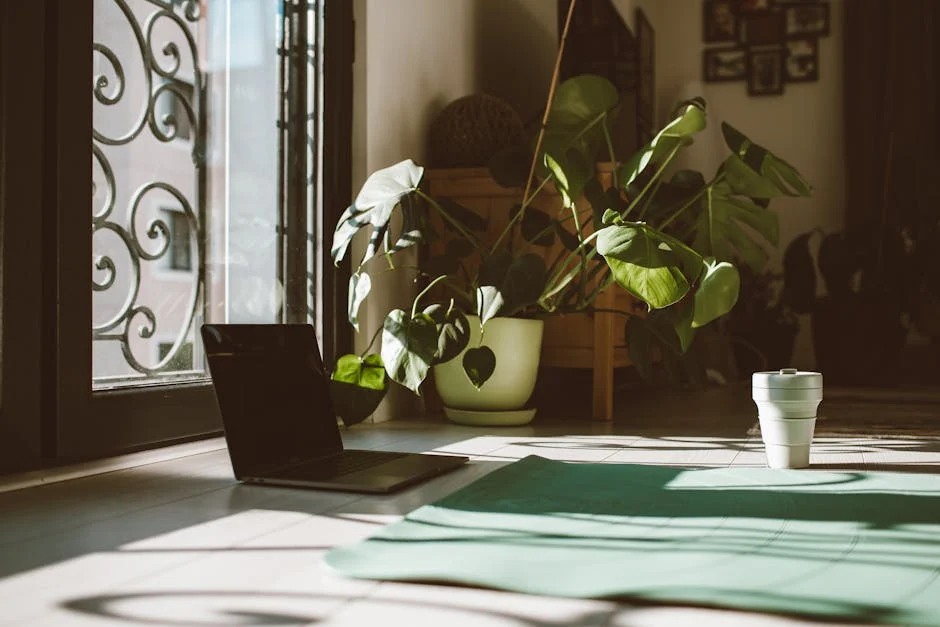Feng Shui in Indoor Decoration: How to Harmonize Your Space for Prosperity and Peace
Introduction
In today’s fast-paced world, creating a sanctuary within your home is more important than ever. Feng Shui, an ancient Chinese practice, offers a powerful framework for harmonizing your living space to promote prosperity, peace, and overall well-being. By strategically arranging your furniture, choosing the right colors, and incorporating natural elements, you can transform your home into a haven that supports your goals and aspirations.
Main Sections
Understanding the Basics of Feng Shui
Feng Shui, which translates to “wind and water,” is based on the belief that our environment significantly impacts our lives. It aims to balance the flow of “Chi,” or vital energy, within a space. A balanced Chi flow can bring positive energy, good fortune, and improved health. Several core principles underpin Feng Shui practices:
- The Five Elements: Wood, Fire, Earth, Metal, and Water. Each element corresponds to different colors, shapes, and materials. Understanding their interactions is crucial for creating balance.
- The Bagua Map: This is an energy map that divides your home or room into nine areas, each associated with different aspects of life, such as career, relationships, and wealth.
- Yin and Yang: Representing complementary opposites, Yin is passive and receptive, while Yang is active and energetic. Striving for a balance between these energies is essential.
Feng Shui in Your Living Room: Creating a Welcoming and Prosperous Space
The living room is often the heart of the home, a place for relaxation, socializing, and family gatherings. Here’s how to apply Feng Shui principles to enhance its energy:
- Placement of Furniture: Position the sofa and chairs to allow a clear view of the entrance. Avoid having your back to the door. “Commanding position” is key.
- Color Palette: Earth tones and greens promote grounding and stability. Introduce pops of color based on the Bagua map sectors you want to enhance.
- Natural Light: Maximize natural light by keeping windows clean and uncluttered. Use light and airy curtains.
- Declutter: A clutter-free living room allows Chi to flow freely. Regularly declutter and organize belongings.
Feng Shui in Your Bedroom: Cultivating Rest and Romance
The bedroom should be a sanctuary for rest, relaxation, and intimacy. Follow these Feng Shui tips to create a peaceful and harmonious bedroom environment:
- Bed Placement: Position your bed in the commanding position, with a headboard against a solid wall and a clear view of the door. Avoid placing your bed directly in line with the door.
- Minimize Electronics: Electronics emit EMFs that can disrupt sleep. Keep TVs, computers, and phones out of the bedroom or minimize their use.
- Soft Lighting: Use soft, warm lighting to create a calming atmosphere. Avoid harsh overhead lighting.
- Calming Colors: Choose soothing colors like blues, greens, and lavender to promote relaxation.
- Pair Objects: Use matching bedside tables and lamps to promote balance and harmony in your relationship.
Feng Shui in Your Kitchen: Nurturing Health and Abundance
The kitchen is associated with nourishment and wealth. Optimize your kitchen’s Feng Shui to promote good health and attract abundance:
- Cleanliness is Key: A clean and organized kitchen is essential for good Feng Shui. Keep countertops clear and regularly clean appliances.
- Stove Placement: The stove represents wealth and prosperity. Ensure it’s in a commanding position and that all burners are in working order.
- Color Choices: Greens, browns, and yellows are excellent choices for the kitchen, promoting nourishment and stability.
- Natural Elements: Incorporate natural elements like plants or a bowl of fresh fruit to enhance the kitchen’s energy.
Incorporating the Five Elements
Balancing the five elements – Wood, Fire, Earth, Metal, and Water – is crucial for achieving overall harmony in your home. Consider the following ways to incorporate each element:
- Wood: Plants, wooden furniture, green and brown colors.
- Fire: Candles, red and orange colors, triangular shapes.
- Earth: Pottery, ceramic tiles, yellow and brown colors, square shapes.
- Metal: Metal furniture, gray and white colors, round shapes.
- Water: Mirrors, water features, blue and black colors, asymmetrical shapes.
Conclusion
Implementing Feng Shui in your indoor decoration is an ongoing process of observation and adjustment. By understanding the core principles and applying them thoughtfully, you can create a living space that supports your well-being, fosters prosperity, and promotes peace. Start with small changes and gradually incorporate more Feng Shui principles as you become more comfortable. Your home will become a true reflection of your inner harmony and a source of positive energy for your life.














Post Comment